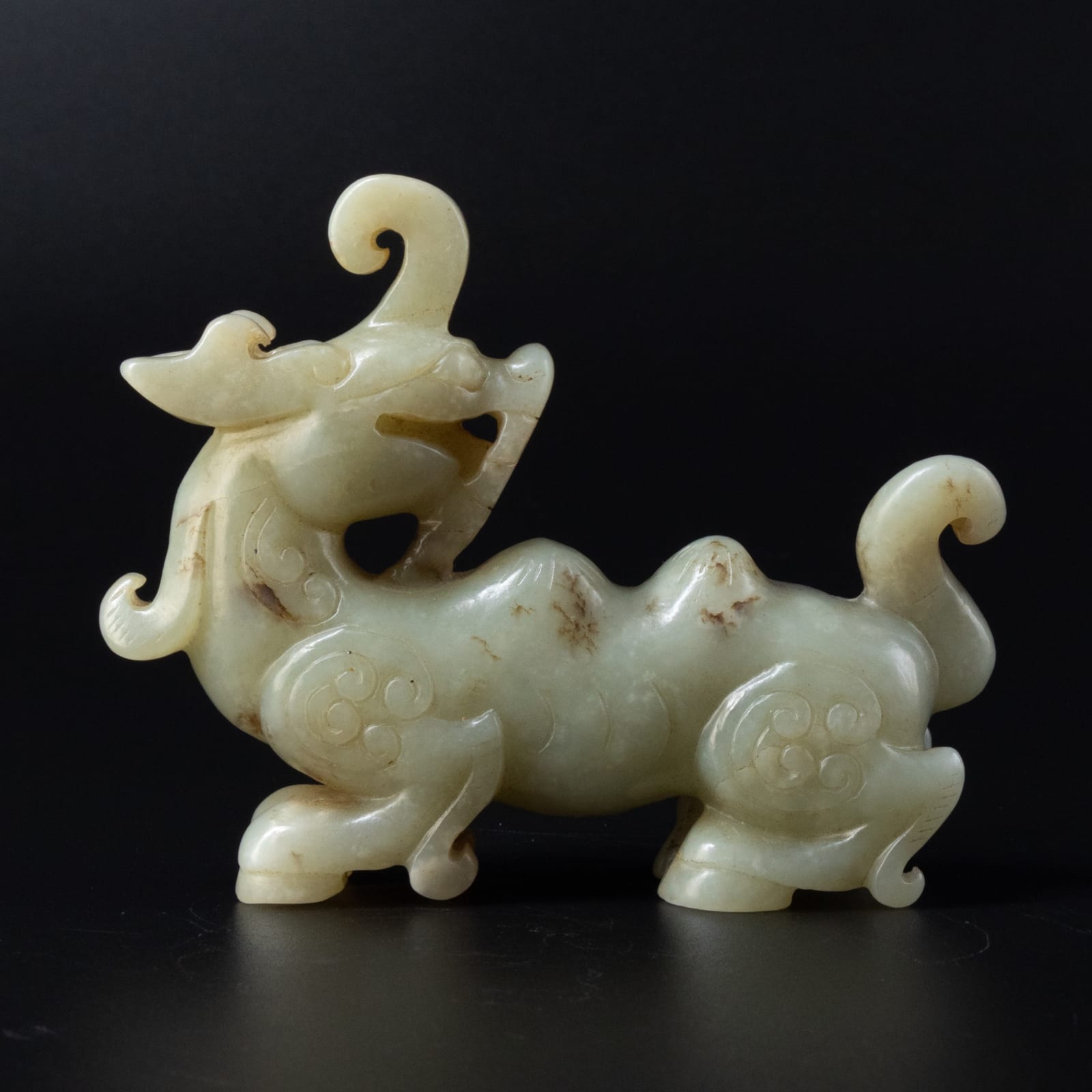Celadon Jade Figure of a Bixie, 202 BCE-220 AD
Jade
Height: 8 cm
Width: 10 cm
Width: 10 cm
ES.0718.22
Fashioned from translucent celadon jade, this figure of a bixie is rendered semi-recumbent with the head turned backwards, resting on its sinuous body. The mythical beast has sharp fangs, a...
Fashioned from translucent celadon jade, this figure of a bixie is rendered semi-recumbent with the head turned backwards, resting on its sinuous body. The mythical beast has sharp fangs, a curled tail, a horns on the front of its head and wings on both sides of its body. The refine carving highlights the skills of the artisan who made it, with the fierceness of the beast which is sharply articulated and the details are rendered with a naturalistic and fluid lines.
The bixie is a mythical animal with the head of a lion, a single horn, and wings. Originally introduced in China from the west, it soon became a popular theme in Chinese visual art, particularly during the transition from the Western Han to the Eastern Han dynasties. It is represented in a wide range of media, from stone to precious metals, such as gold and silver.. These various artefacts make the bixie an important example of vernacular Chinese representations of mythical animals.
The bixie is a mythical animal with the head of a lion, a single horn, and wings. Originally introduced in China from the west, it soon became a popular theme in Chinese visual art, particularly during the transition from the Western Han to the Eastern Han dynasties. It is represented in a wide range of media, from stone to precious metals, such as gold and silver.. These various artefacts make the bixie an important example of vernacular Chinese representations of mythical animals.
